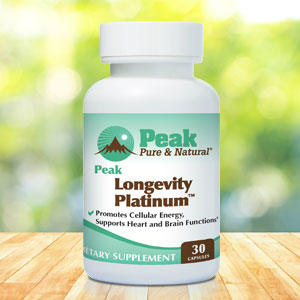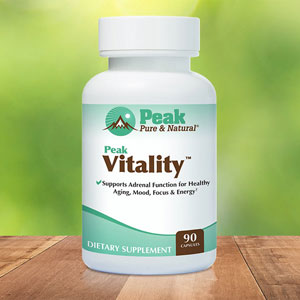Get Easy Health Digest™ in your inbox and don’t miss a thing when you subscribe today. Plus, get the free bonus report, Mother Nature’s Tips, Tricks and Remedies for Cholesterol, Blood Pressure & Blood Sugar as my way of saying welcome to the community!
Closing in on a key driver of aging and disease

Research has uncovered a possible way to live into old age, without the so-called disease of aging, which includes heart disease, atherosclerosis, cancer, kidney disease, sarcopenia and dementia, among others.
Behind all these conditions is the chronic inflammation that sneaks up as we get older. In fact, a unifying theory of disease has developed that strongly purports inflammation is the major contributing factor to disease, like those I just listed that can make getting older hard to bear.
Luckily for us, a breakthrough study has discovered the root cause of this “inflammaging,” and holds great promise for making our senior years less about disease and more about health and vitality.
What is inflammaging?
Inflammaging has been defined as the state of systemic, low-grade inflammation that increases with age, independent of infectious pathogens.
In other words, as we age, inflammation in our body increases, without any external help.
So what makes us prone to this chronic, low-grade inflammation?
A graduate student at the University of Virginia School of Medicine and his research team have identified a “keystone” mechanism responsible for age-related changes in macrophages that drive inflammaging.
It involves mitochondria, the power generators in all our cells.
Mitochondria depend heavily on calcium signaling, a process within every cell that is crucial to regulating almost every bodily function.
For example, calcium signaling regulates the reaction of our nerves, the contraction of our muscles, our intestinal microbial activity, the activity of enzymes and our circadian rhythm.
The researchers found that as we age, the mitochondria living in our macrophages (immune cells) lose their ability to take up and use calcium.
The researchers believe that increasing calcium uptake by the mitochondria in our macrophages could prevent inflammaging and its terrible effects.
And because there are macrophages in all organs of our bodies, Desai says, “This discovery illuminates new therapeutic strategies to interdict the inflammatory cascades that lie at the heart of many cardiometabolic and neurodegenerative diseases.”
In other words, correcting how aging mitochondria use calcium may slow our body clocks and help us live a longer healthspan, free of heart disease and dementia.
Fight off the effects of inflammaging now
First, let me explain why fighting inflammaging won’t involve supplementing calcium. Increasing your intake of calcium won’t improve the ability of the mitochondria to use it, and too much calcium can be harmful.
However, there may be a way to trick mitochondria into better use of the calcium it gets in through diet…
In a study looking at another health issue, scientists saw that the mitochondria of mice following a calorie-restricted diet were able to absorb approximately 70 percent more calcium.
You can also go directly after inflammaging by decreasing inflammation in your body…
Start by adopting inflammation-fighting habits, like:
- Eating an anti-inflammatory diet. Studies show diets like the Mediterranean diet can lower CRP levels by as much as 20 percent. And don’t forget about the five foods that douse disease-causing inflammation identified by the University of Liverpool’s Institute of Ageing and Chronic Disease.
- Supplementing omega-3s. The fatty acids in fish or krill oil can curb chronic inflammation. Studies show taking 960 mg per day of EPA and 600 mg per day of DHA can lower CRP significantly.
- Upping your vitamin C intake. Research suggests that taking 1,000 mg of vitamin C per day can lower CRP levels by 25 percent.
- Exercising. Researchers from the University of California San Diego School of Medicine discovered that your greatest weapon against chronic inflammation isn’t an expensive drug or supplement—it’s exercise. Best part? It only takes 20 minutes a day.
- Supporting your mitochondria. That means learning more about the longevity nutrient, pyrroloquinoline quinone (PQQ).
If you want to know the level of inflammation in your body, you can ask your doctor about a test that measures C-reactive protein (CRP), a marker of chronic inflammation in the body.
But if you’re over 40, save yourself the co-pay. Inflammaging is likely occurring at some level already. Whether your levels are high or not, taking a preventative approach is a good idea.
Editor’s note: Discover how to live a cancer prevention lifestyle — using foods, vitamins, minerals and herbs — as well as little-known therapies allowed in other countries but denied to you by American mainstream medicine. Click here to discover Surviving Cancer! A Comprehensive Guide to Understanding the Causes, Treatments and Big Business Behind Medicine’s Most Frightening Diagnosis!
Sources:
Inflammation discovery could slow aging, prevent age-related diseases — Science Daily
Reduced mitochondrial calcium uptake in macrophages is a major driver of inflammaging — Nature Aging
4 Ways to Keep Inflammaging from Shrinking Your Muscles — Easy Health Options














